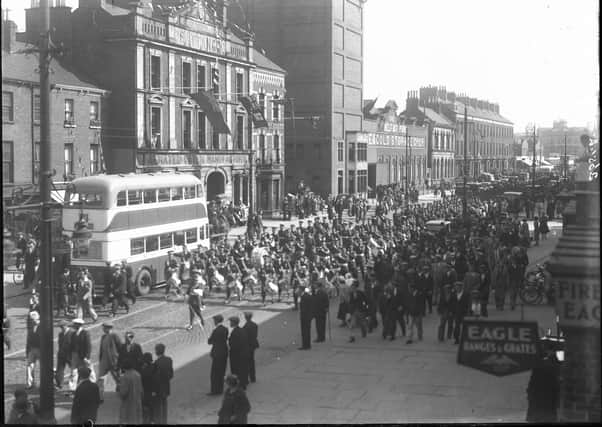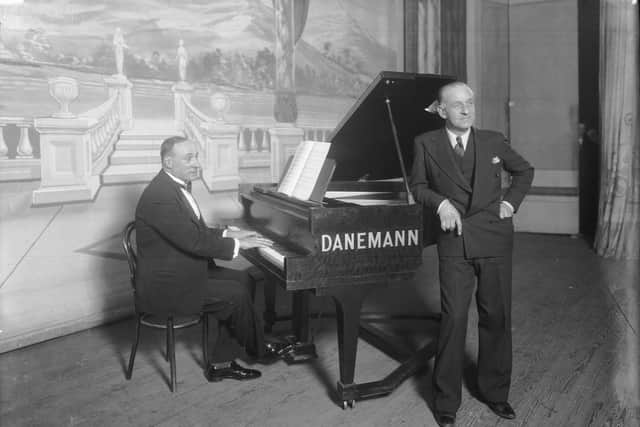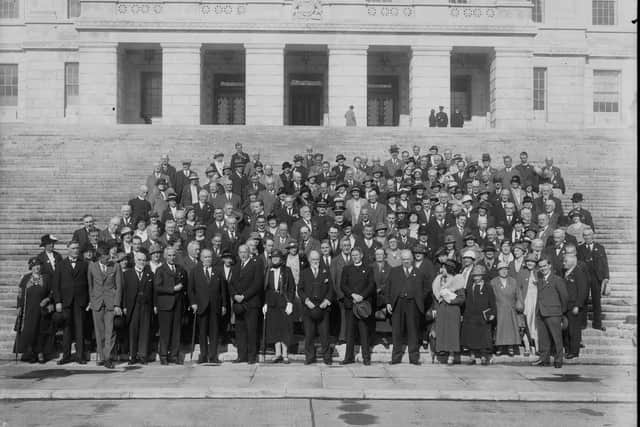New chapel consecrated in St Anne’s Cathedral (1932)


The chapel was the gift of Mr Edwin Henry Shaw a Belfast merchant.
There was a large attendance and those present included the Lord Bishop of Warrington, the Lord Bishop of Cashel, the Archdeacon of Down, the Reverend Canon Williams, Reverend W Parr, the Dean of Belfast and the cathedral clerical staff.
Advertisement
Hide AdAdvertisement
Hide AdThe Dean Belfast, who was the preacher at the consecration service, took for his text, “The House that is to builded for Lord must be exceeding magnifical,” (Chronicles, xxii, 5).


He said: “The ideal which inspired us from the day Mr Shaw undertook to bring down to earth the dream which many besides myself had dreamed was that which possessed David when he dreamed dreams of a temple in which God might dwell.
“Mr Shaw made two conditions, and only two, that his identity should not be disclosed, and that the house to be built should be exceedingly magnifical.
“The first of these he later waived at my request; the second, which he frequently reiterated, has been religiously kept.
Advertisement
Hide AdAdvertisement
Hide Ad“Architect and builder and artist and craftsman set to work to produce the very best architecture, the most lasting work, the choicest art, the most perfect craftsmanship that invention of brain, honesty of toil, dexterity of hand could create to adorn the house of God’s solemnities


“Some of these co-workers made their labour a prayer, a religious exercise, the pouring out of a very precious offering to Him who endowed the brain with power to think, the hands with power to do.
“Others, who may not have shared these lofty sentiments, at least shared in the joy which true workmen have in doing good and honest work. For all, from the man at the one end who found the money to the labourer at the other who bore the heavy physical burdens, thank God, since all, according their several ability, played part in carrying out the lofty determination that ‘the house to builded for the Lord must be exceeding magnifical’.”
Ulster welcomes Prince of Wales (November 1932)
“In speech, as in action, the Prince Wales has the knack of getting down to the heart of things,” declared the News Letter on the day following opening of Parliament Buildings at Stormont in East Belfast in November 1932.
Advertisement
Hide AdAdvertisement
Hide AdThe editorial continued: “His utterances yesterday – first at Stormont and afterwards at the City Hall – contained passages that will give infinite pleasure to the Ulster people. They needed no reminder of the gracious words of the Sovereign in Inaugurating their Parliament more than ten years ago, but in the Prince’s tribute to the fidelity with which the trust has been kept, linked as it was with a glowing reference to the ‘courage, tenacity, loyalty, and devotion that have always characterised the men of Northern Ireland and have made them famous in the annals of the Empire’ they have at once encouragement and inspiration.”
The News Letter concluded: “Ulster needs no stimulus to her loyalty.
“Throughout her history an Imperial Province she has kept faith, and never more wholeheartedly than when, at time of domestic crisis, with seeming betrayal staring her the face, she sent the flower of her manhood to battle Britain’s side In the Great War.
“In their devotion to the British Crown and the British connection her people still yield to no other. The ties were never stronger, and if cementing were necessary – which it is not – the Prince’s presence among us has supplied the binding material. He cannot return too soon or too often.”
Advertisement
Hide AdAdvertisement
Hide AdExhibition of world famous sculptor August Rodin (December 1932)
In December 1932 the News Letter reported the exciting news that Belfast was to get to see examples of the work of great sculptor Auguste Rodin which was to be held at the new Belfast Municipal Museum.
The News Letter noted: “Since the opening of the new Belfast Municipal Museum several very important art exhibitions have been held, but they are perhaps overshadowed by the one which will be opened to the public today.
“Over hundred bronze casts of Rodin’s sculptures, valued at many thousands of pounds, are on view, and the opportunity of seeing them may not again come the way of Belfast people for many years.”
Advertisement
Hide AdAdvertisement
Hide AdThere was a cast of the famous ‘Le Pemseur’ and one of his ‘Orpheus’ and heads of French premier George Clemenceau and George Bernard Shaw.
The News Letter noted that Shaw had playfully suggested in the catalogue for the exhibition that biographical dictionaries 1,000 years hence will contain the item – “Shaw, George Bernard, subject of a bust by Rodin; otherwise unknown.”
Comment Guidelines
National World encourages reader discussion on our stories. User feedback, insights and back-and-forth exchanges add a rich layer of context to reporting. Please review our Community Guidelines before commenting.